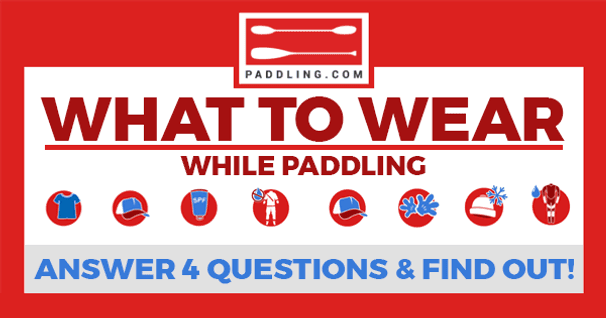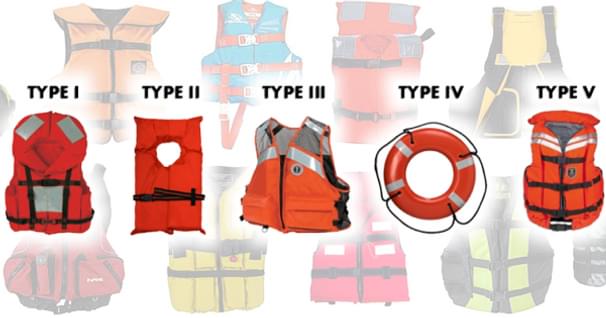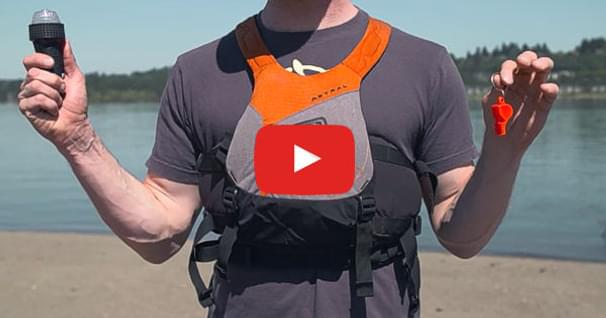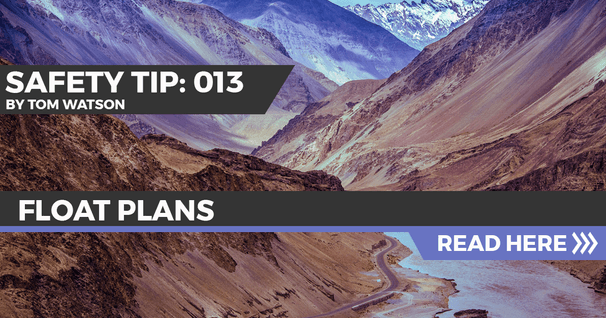The Float Plan: A Vital Paddling Tool
A sudden sequence of bad weather caused two groups of kayakers to become overdue to the point Search and Rescue units were activated to find them. The first group was recovered within hours; the second group had to survive three days before being found. The difference? The first group had left a float plan behind, the second group had just charged off with out telling anyone where they were going or what their plan was.
Their "plan", that's the key. A float plan is an essential part of any kayak trip that has the potential for developing into a situation where you might not return when you hope to. Weather, injuries, lost gear can all lead to reasons why you can't return at an anticipated time. If you end up being overdue to the point of concern, will anyone know where you were? Would anyone know how to describe your party to aid rescuers into recognizing you in the field? All these questions can be answered by using a Float Plan.
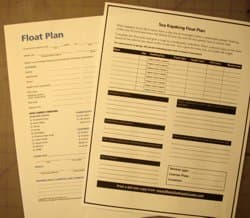
What to include in your float plan
As you can determine, a float plan is exactly what it says: a plan that tells others where you are going to go float (paddle, canoe, kayak, etc.). It provides information on group size, type of gear and color of gear used, special signaling devices to be anticipating and other pertinent information that would aid someone out in the field looking for you.
While float plans vary from organizational boilerplates to a home-made, common-sense listing, the essence of the plan is to adequately describe your group's itinerary (where are you going?, how long will you be there?, when and where will you return?), their description (number in party?, type and color of boats and PFDs?, other telltale visual factors), and what type and color (where critical) of accessories do you have (tents, tarps, other large visual elements? Knowing what means you have for signaling is also very useful (for example: PLBs, signal flares, VFH radio, cell phone)? All these factors will make if easier for rescuers to coordinate a search and save valuable time locating you.
Most float plans begin by including a roster of all members of the party: their names, age, gender and phone number. Part of the search and rescue procedure may be to contact each member's number to learn if that person has made any contact or if any additional information may be helpful.
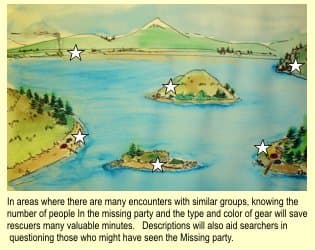
A description of the gear each person has is important, too. It is very helpful to know the type and color of the watercraft (yellow, single sea kayaks, for example) as well as the color of each one's life jacket. This is helpful in direct spotting or through questioning others in the area. Not knowing the color of the boats means extra time checking every craft in the search area.
Each person's skill level should be noted. Presuming prudent paddlers in a group would not jeopardize the safety of lesser-experienced paddlers - or if novices might respond to conditions differently - one can anticipate probable actions a group might have taken.
Back several years ago when Personal Locator Beacons (PLB) finally became legal in the US, a key part of introducing them to the public was the fact that each unit is registered specifically to an individual with all the necessary contact information recorded so the satellite knows exactly who it's "listening" to. Make sure that your information is all updated before you head out with your signaling units. That equipment should be recorded in your Float Plan as well.
Your trip itinerary is a key element in the plan. Where you departed from may be quite obvious, but include it anyway. Also record the anticipated time you will be in route, where you plan to camp. All plans need to be flexible so make sure any possible alternate routes are listed as well. A daily list of potential take-outs would be a big help to SAR units, especially if all the other information has been accurate.
In the case of traveling some distance before putting in, make sure you've described your vehicles including year, make, model, color and license. Placing your float plan document on the dash of your car is a good way to have it available to search and rescuers but also exposes you to those who might like to know how long your car will sit there unattended. Obviously you don't want to leave any valuables in it.
It's apparent that you are providing potential searches with as much information as you can to help them find you should such a situation arise. That's why it's important for you to anticipate any alternatives and include them as well. Obviously we don't always make our intended destination due to human or natural elements. Take the time to choose alternate routes or shorter take-out destinations.
In Alaska, a weeklong kayak trip through Kenai Fjords National Park included a fly-over of the entire route to mark potential emergency take-out beaches all along the course. We eventually had to hold over for three days in one of those spots hoping the pilot would remember that option as well. Anything that will limit the amount of second-guessing on the part of the SAR team will mean a quicker recovery time.
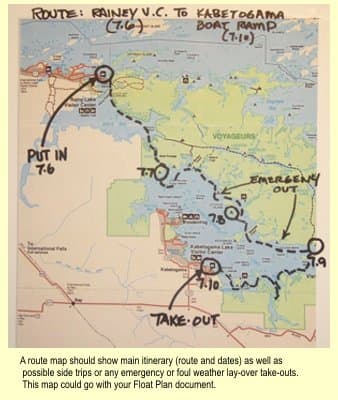
You can create and share a float plan using our Float Plan Tool. In addition, there are several other sites on the Internet that have boilerplate float plans. Just type in "kayak float plan" in the search window.
A key distribution of the plan is the last critical element. Leave one with each member to give to family or friends. It's common to drop one off at the harbormaster's office at the nearby marina. According to website warnings, the US Coast Guard does not accept float plans. I take that to mean they do not accept receipt of them but will obviously respond after the fact to information on them. Lastly, leave one in your vehicle at your launch site.
One often takes extended paddling trips to relax and rid one's self of the labors of life. A float plan may seem like excessive and needless paperwork, but it's far less traumatic than trying to be a survivor when no one knows you're missing or where to even start looking for you when you are overdue.
Float plans make sense. Please use one.
Related Articles
Wondering what to wear when going paddling? Answer 4 quick questions and instantly learn what you need…
Tom Watson reviews some of the changes that are in store for defining “Life Jackets” and “PFDs”? It’s…
What an itinerary is to a traveler, a “Float Plan” is to a paddler embarking on an extended kayak…
